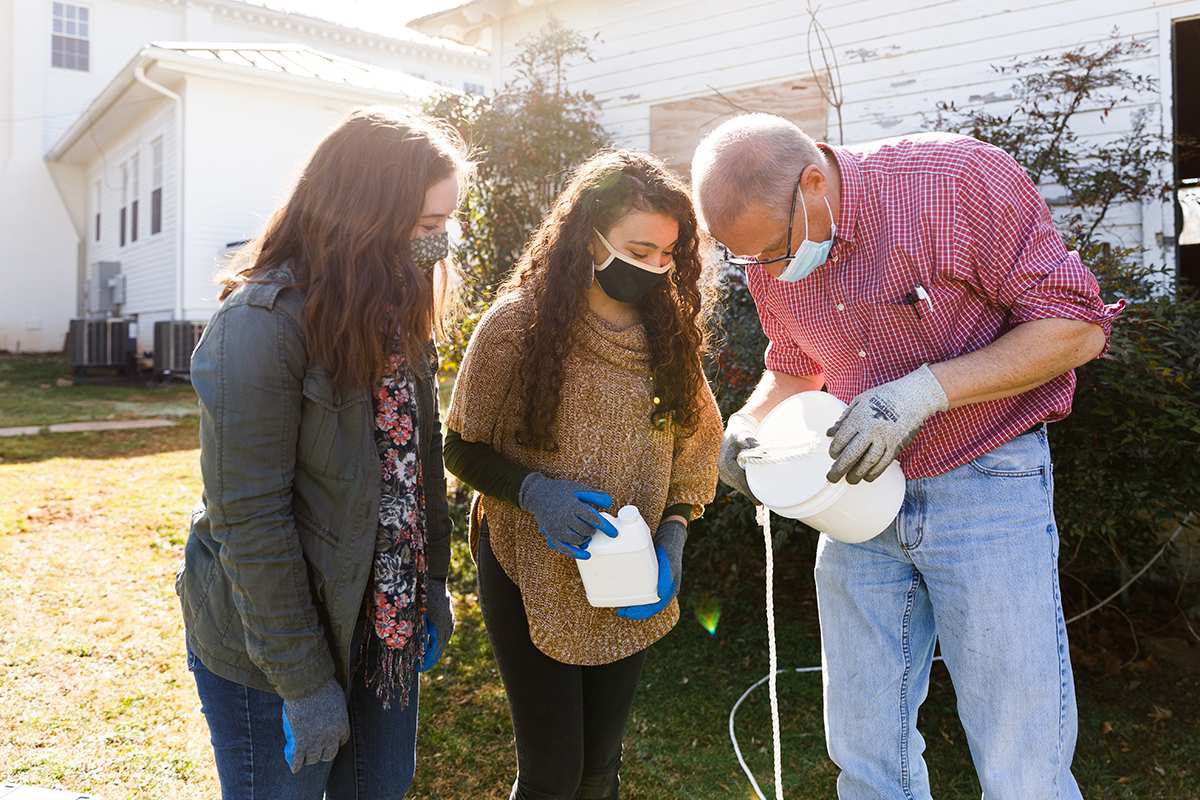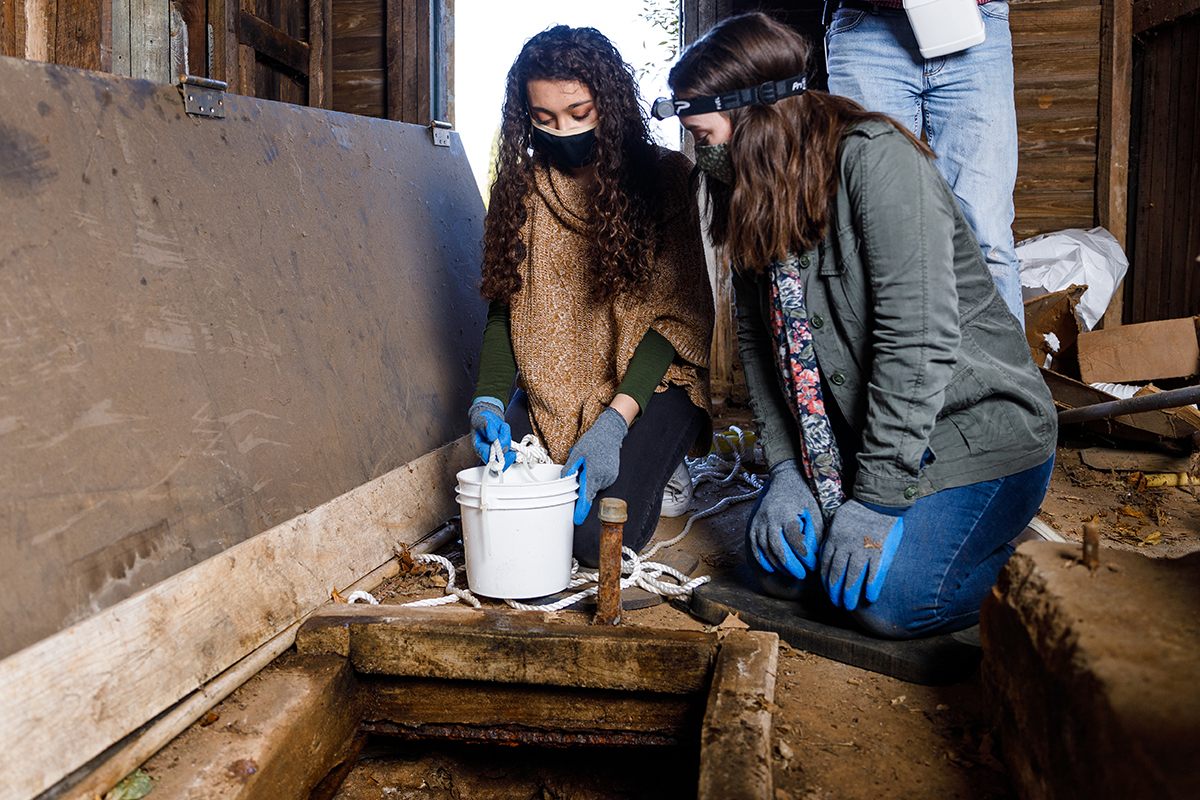
Dr. Michael Bender and students Asia Eskaros and Chloe Vernon observe their collected water near the Bedford Alum Springs Hotel.
Putting the rumors of history to the test, Dr. Michael Bender, a professor in Liberty University’s Biology & Chemistry Department, led two students in a study of the water near the Bedford Alum Springs Hotel, a historic 19th century resort property owned by the university, where it was once believed a mineral spring delivered healing capabilities.
The research done by Bender, sophomore forensic science student Asia Eskaros, and junior chemistry student Chloe Vernon was a follow-up of sorts to work done by a chemistry professor William H. Gilham at Virginia Military Institute at the property roughly 150 years ago that spoke of the minerals that made the resort and its nearby springs such a major draw for travelers.
“When we saw their analysis, we realized that it was quite a few years before the periodic table was created, so we thought, ‘Why don’t we translate their findings into modern chemistry, find the water sources on the site and see if the water sources are as concentrated in dissolved minerals as they?’” Bender said.
The property, which dates back to the 1870s and is located about 10 minutes from campus, is thought to be the first resort hotel in the area. In its heyday, the grand resort attracted people from up and down the East Coast and Midwest. People came to “take the waters,” bathing in and drinking water from the nearby springs, which contained minerals thought to have curative properties for many ailments. The water was bottled and sold.
Using the prior research as a reference for what elements look for — iron, calcium, magnesium, and aluminum (where the “alum” in the hotel’s name comes from) — the team began taking samples from hand-dug wells at the hotel and the nearby Mead’s Tavern, a historic site also owned by Liberty. (The original springs are on separate privately owned property that isn’t accessible to the team, but some people have proposed that at least one of the wells on Liberty’s properties shared similar mineral content as the springs.) The team brought samples back to the lab and boiled down the water to look for minerals.
“We compared it to tap water and they are very comparable, and the amount of solids is equivalent to drinking water,” Bender said. “It was more like the kind of scale you would find at an apartment or house’s water source. We checked nothing toward the medicinality of it, but it looks so much like the tap water that we drink that it’s clearly not the mineral source.”
The team found 0.02 parts per million of iron in the water, a far cry from the approximately 300 parts per million of iron that the original VMI analysis had found in the mineral spring. Similar lesser amounts were found of the other elements in the well water samples as compared to that historic analysis.
The project was funded through a grant from Liberty’s Center for Research & Scholarship and organized through a partnership with the Department of History’s ongoing archeology in the former town of New London coordinated by Director of Public History Initiatives Donna Davis Donald.
Eskaros said that being able to engage with the archeological side of the site’s history added an element of excitement.
“We got to see the archeological dig site, look down the wells, and say, ‘Someone actually dug this hundreds of years ago,’” Eskaros said. “As a scientist, it’s easy to get caught up in the numbers and the processes, and so being able to take a step back from the beginning of the project and see the larger context of what we were doing was so great. We were basically investigating the history of the place.”
Bender said conducting field research is valuable to undergraduate students.
“I want to make sure that our students are getting the right amount of work and exposure that goes with starting and confirming their scientific careers,” he said. “Actually getting outside of the lab and getting to do field work, for the geeks like us who want to do science and look for things that are unknown, has been really good for them. It’s for real, it’s answering questions, and it’s getting the students started.”
For Eskaros, it was her first time doing practical research in a chemistry lab. But now that she has acquired the skills, “I feel very comfortable when I walk into a lab and I know what to expect,” she said.
Vernon said the hands-on project showed her that “you don’t necessarily always have a written procedure and sometimes things don’t go like you planned, and that was a real-life learning process.”
“It helped me take my understanding and comfort level in the lab and expand it,” she said. “As a chemistry major, a lot of the careers that I have the opportunity to go into are lab-based, so this is preparing me for the techniques in the lab but also how to approach and plan a project like this.”
Bender said the team hopes to present its findings at the Virginia Academy of Science in the fall and possibly during Liberty’s Research Week next spring.

